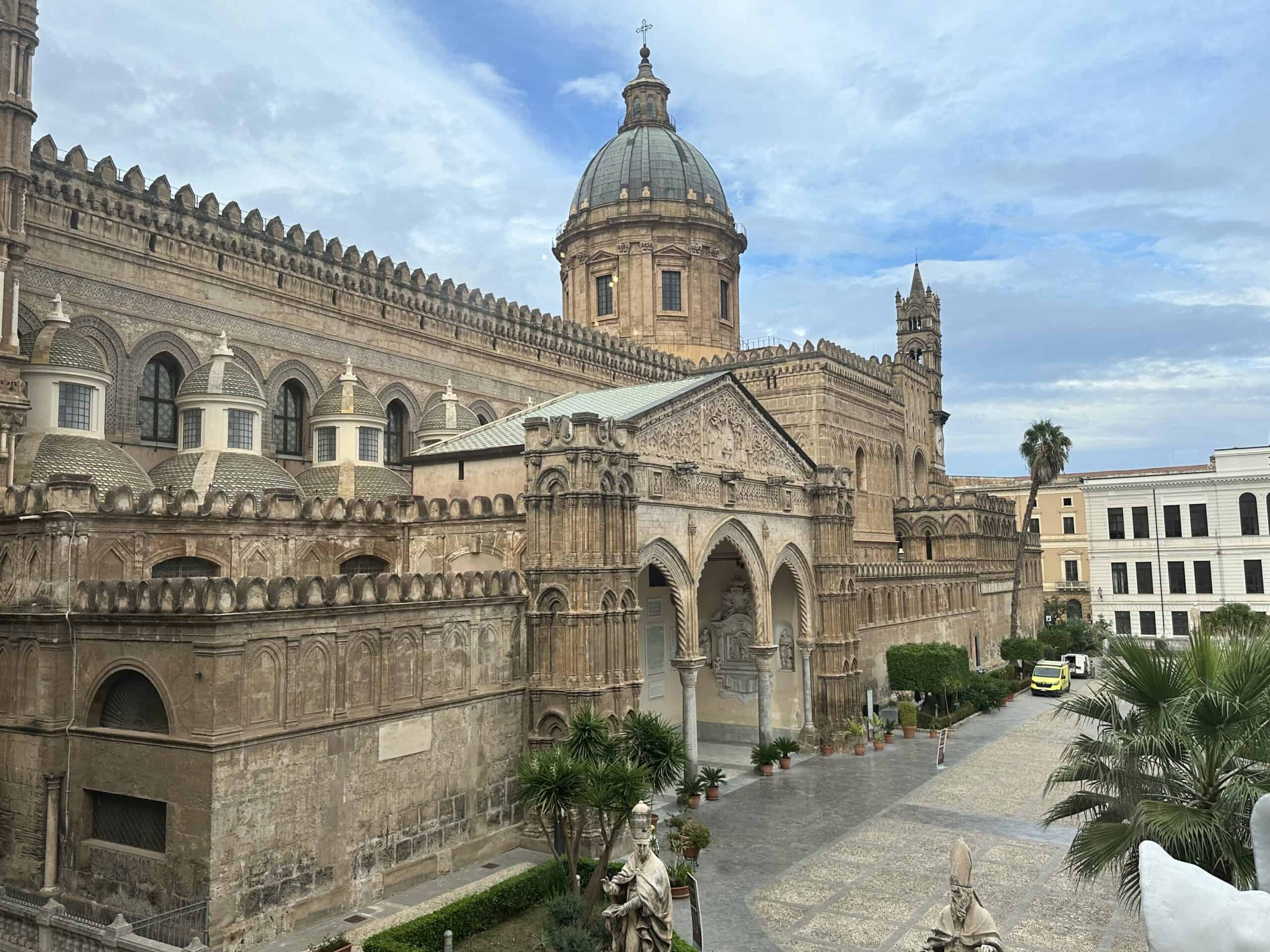
The Cathedral of Palermo is the main place of worship in the city and is the largest of the Norman cathedrals in Sicily.
Its architecture rich in different styles, with elements of Greek, Roman, Arab, Norman, Catalan and Gothic art is a direct consequence of the presence of multiple populations who, over the centuries, have alternated on Sicilian soil.
In the fourth century A.D. a small temple was built following the issuance of Constantine’s edict of tolerance.
A new temple, consecrated to the Virgin Mary, was consecrated in 604 and later modified by the Muslims who transformed it into a mosque in 831. With the capture of Palermo, the Normans returned the mosque to Christian worship in 1072.
A new building was completed in 1185 with the first nucleus of the current cathedral.
After the various transformations undergone over the centuries, the Cathedral of Palermo today has a Latin cross with three naves. In the transept, in diametrically opposite positions, are the Chapel of the Sacrament and the Chapel of Santa Rosalia, patron saint of Palermo.
On the floor of the nave there is a sundial, built in 1801. At noon, light enters through a hole, called a gnomon, located in the dome at the top and hits the sundial at the point where the zodiac sign corresponding to the current month is indicated.
To the left of the entrance to the church are the Tombs of the Royals. The first bay there are the funerary monuments of Henry VI of Swabia and his wife Constance of Altavilla, set in the wall, there is a Roman sarcophagus with the remains of Constance of Aragon. In the second bay there are the monuments of Roger II of Sicily, Frederick II of Swabia and William of Aragon.
In the rooms of the Sacristy of the Canons there are exhibits that make up the “Treasure of the Cathedral of Palermo”. The collection includes sacred vestments, monstrances and chalices made between the sixteenth and eighteenth centuries. The most valuable piece in the collection is the gold tiara of Constance of Aragon, a masterpiece of medieval jewelry.
A highly evocative experience is the visit of the roofs of the Cathedral, thanks to which it is possible to discover the artistic and architectural elements of the external walls and admire Palermo from above.






















